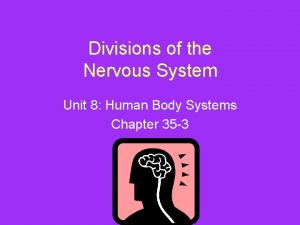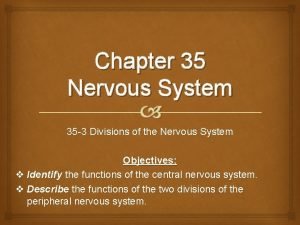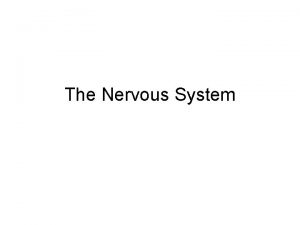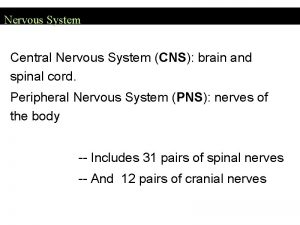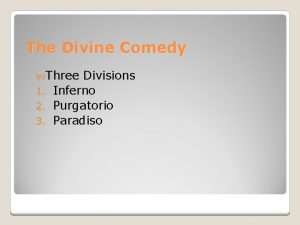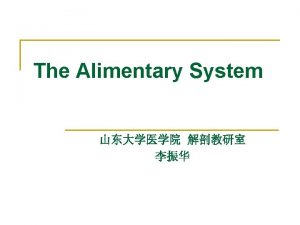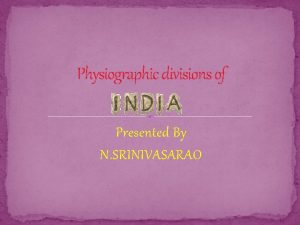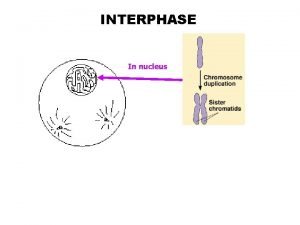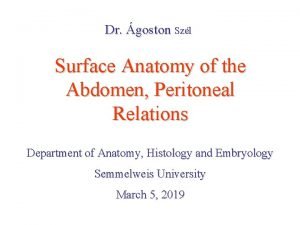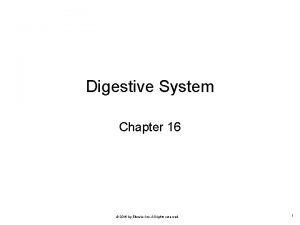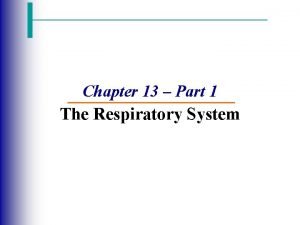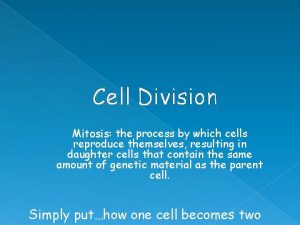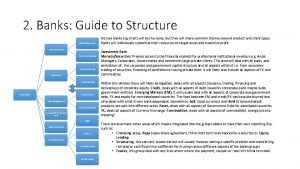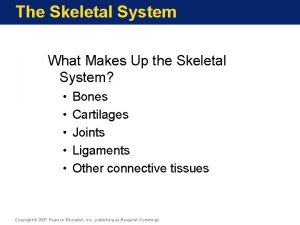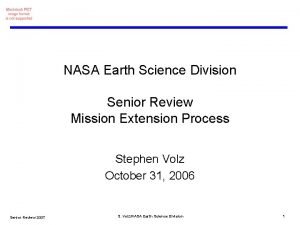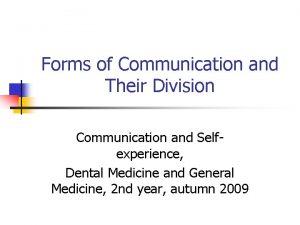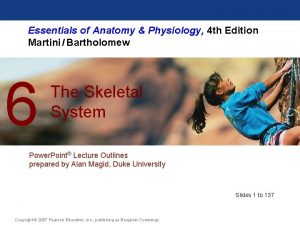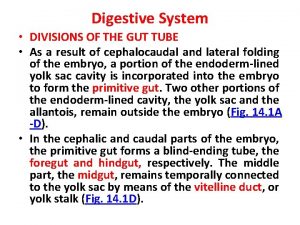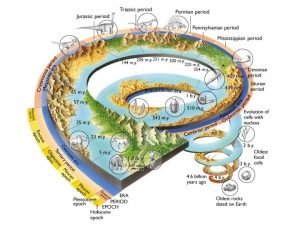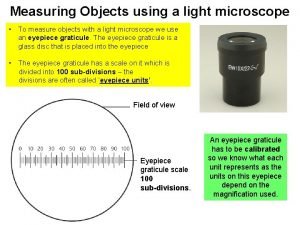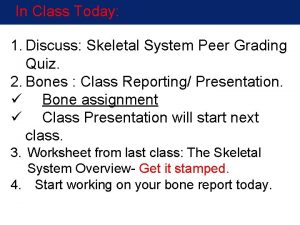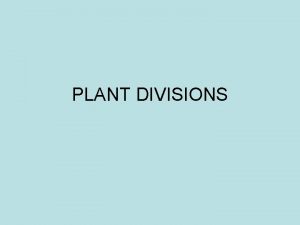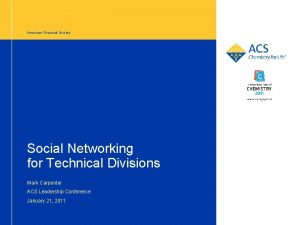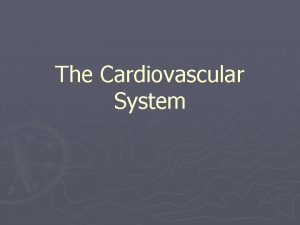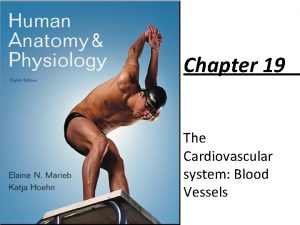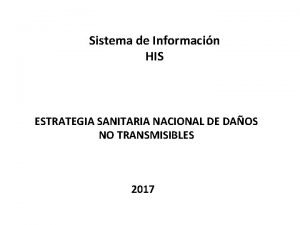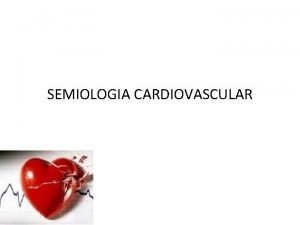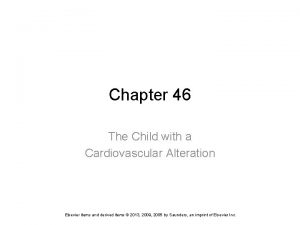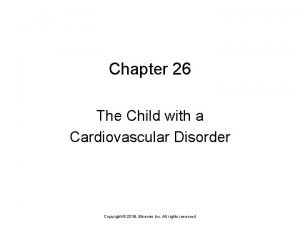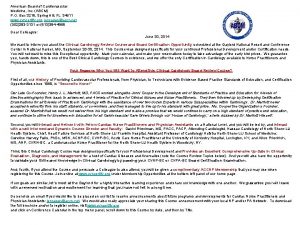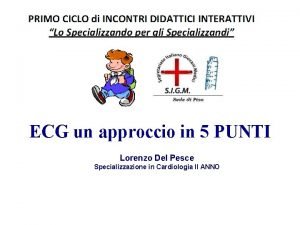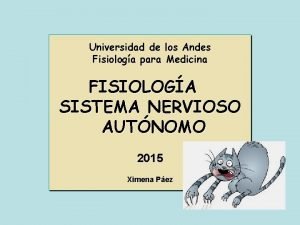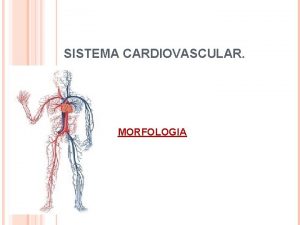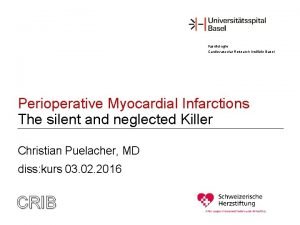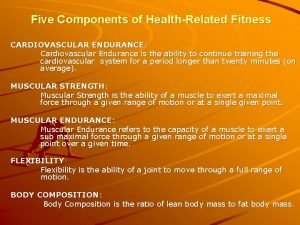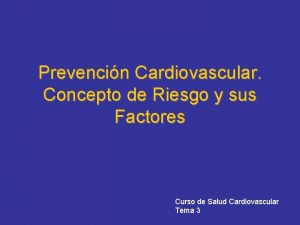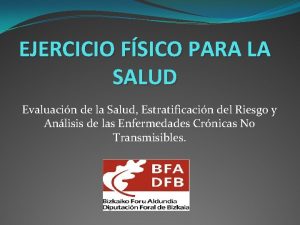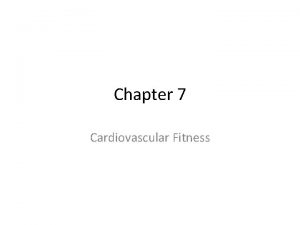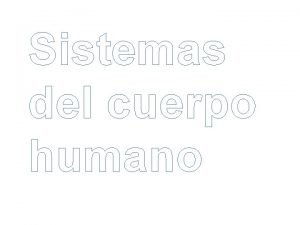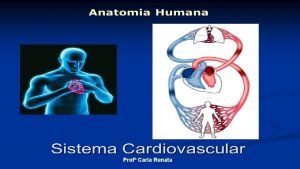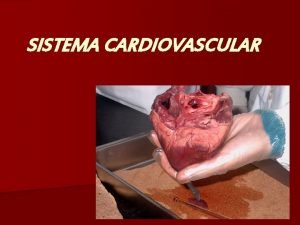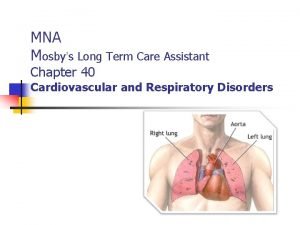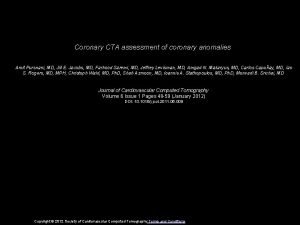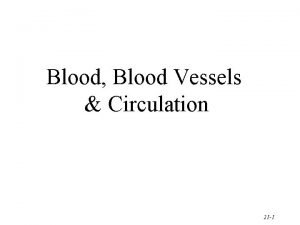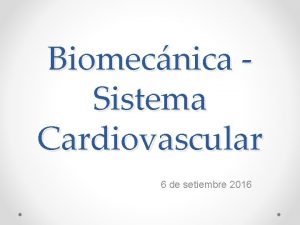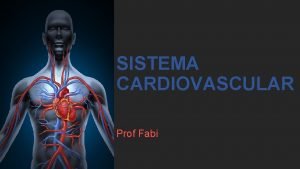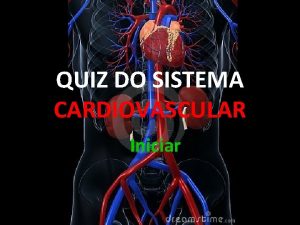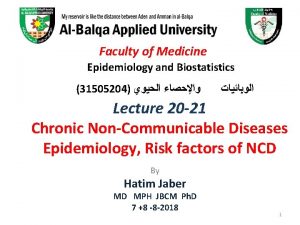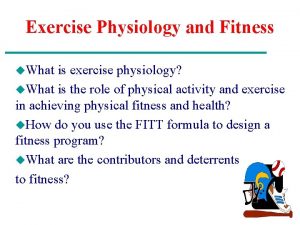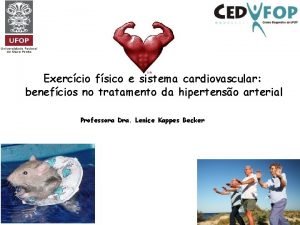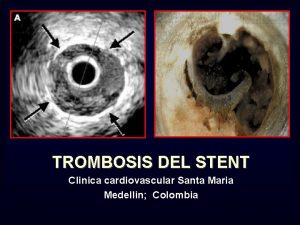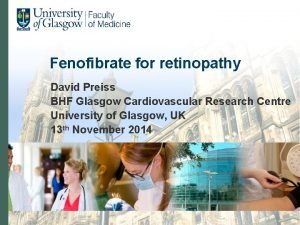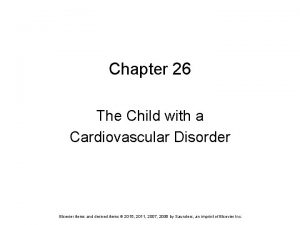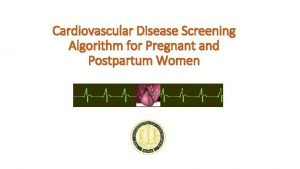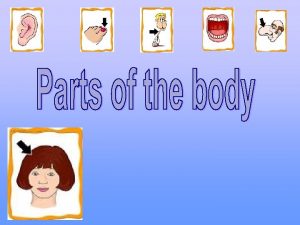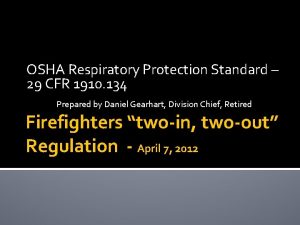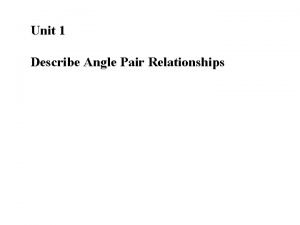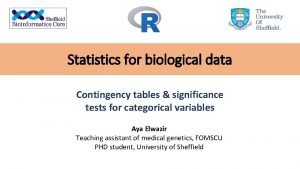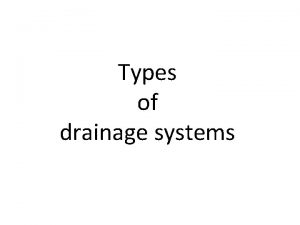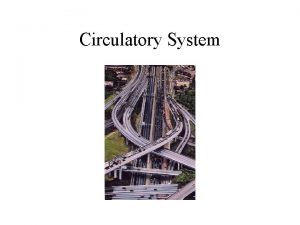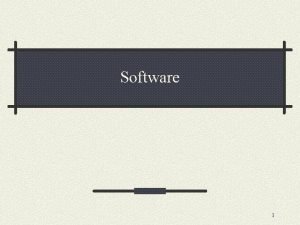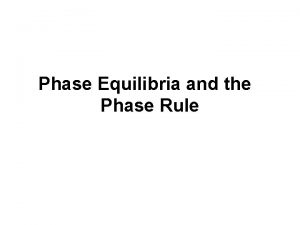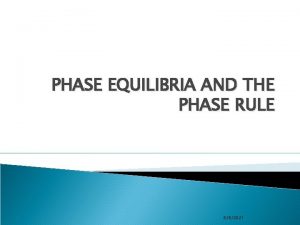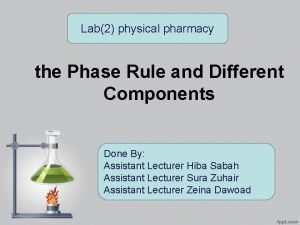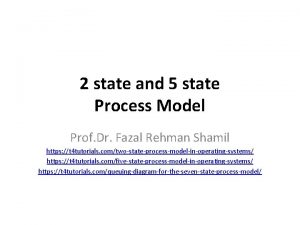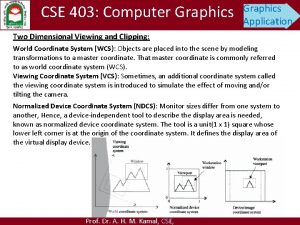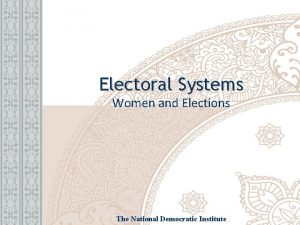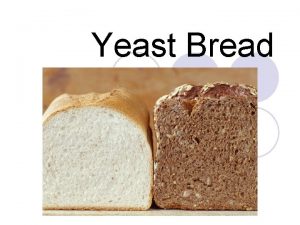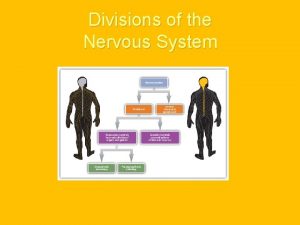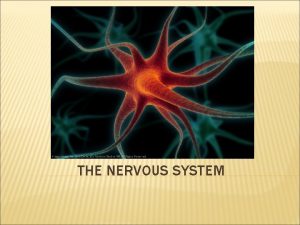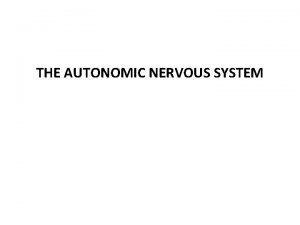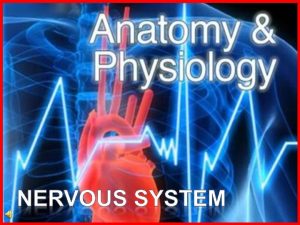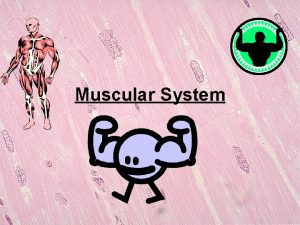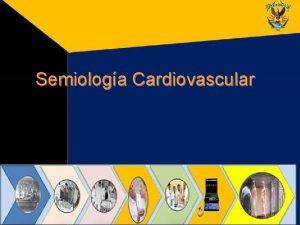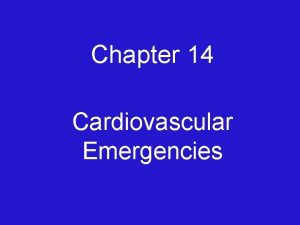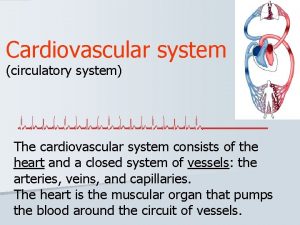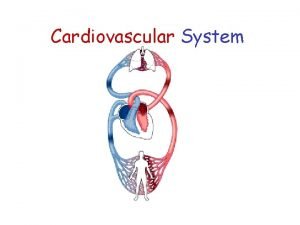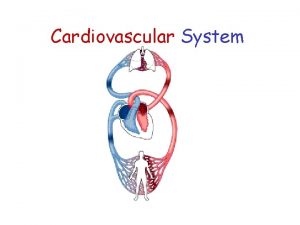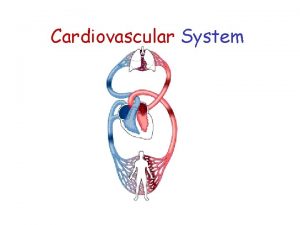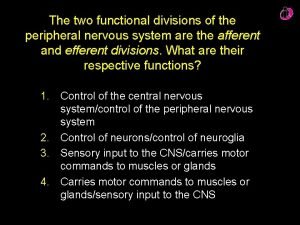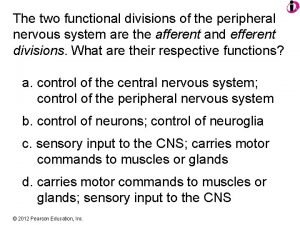Cardiovascular System Cardiovascular System Two divisions Cardiovascular System






























































































































































- Slides: 158

Cardiovascular System

Cardiovascular System • Two divisions

Cardiovascular System • Two divisions: pulmonary

Cardiovascular System • Two divisions: pulmonary & systemic

Cardiovascular System • Pulmonary Division –Blood flows from heart

Cardiovascular System • Pulmonary Division –Blood flows from heart to alveolar capillaries

Cardiovascular System • Pulmonary Division –Blood flows from heart to alveolar capillaries and back to heart


Cardiovascular System • Systemic Division

Cardiovascular System • Systemic Division – Blood flows from heart

Cardiovascular System • Systemic Division – Blood flows from heart to all tissue capillaries

Cardiovascular System • Systemic Division – Blood flows from heart to all tissue capillaries (except alveolar capillaries)

Cardiovascular System • Systemic Division – Blood flows from heart to all tissue capillaries (except alveolar capillaries) and back to heart


• Pulmonary arteries carry blood:

• Pulmonary arteries carry blood: High in O 2, low in CO 2

• Pulmonary arteries carry blood: High in O 2, low in CO 2 Low in O 2 high in CO 2


• Heart

• Heart – Location

• Heart – Location: mediastinum



• Heart – Location: mediastinum

• Heart – Location: mediastinum – Size?

• Pericardium

• Pericardium: protective sac surrounding the heart

• Pericardium: protective sac surrounding the heart

• Pericardium: protective sac surrounding the heart –Visceral pericardium

• Pericardium: protective sac surrounding the heart –Visceral pericardium – Parietal pericardium

• Pericardium: protective sac surrounding the heart –Visceral pericardium – Parietal pericardium


• Layers of the heart wall

• Layers of the heart wall – endocardium

• Layers of the heart wall – endocardium – myocardium

• Layers of the heart wall – endocardium – myocardium


• Layers of the heart wall – endocardium – myocardium – epicardium

• Layers of the heart wall – endocardium – myocardium – epicardium (same as the visceral pericardium)


• Chambers of the heart

• Chambers of the heart – Receiving chambers:

• Chambers of the heart – Receiving chambers: atria

• Chambers of the heart – Receiving chambers: atria (singular:

• Chambers of the heart – Receiving chambers: atria (singular: atrium)


• Chambers of the heart – Receiving chambers: atria (singular: atrium)

• Chambers of the heart – Receiving chambers: atria (singular: atrium) –Pumping chambers: ventricles

• Right ventricle

• Right ventricle: pump for the pulmonary circulation

• Right ventricle: pump for the pulmonary circulation • Left ventricle

• Right ventricle: pump for the pulmonary circulation • Left ventricle: pump for the systemic circulation


• “Great Vessels” of the Heart – Aorta – Pulmonary Trunk

Aorta Superior RPA vena cava Inferior vena cava Pulmonary veins LPA Pulmonary trunk

• Heart valves

• Heart valves

• Heart valves: ensure one-way flow of blood through heart

– Semilunar valves

– Semilunar valves • pulmonary semilunar

– Semilunar valves • pulmonary semilunar • aortic semilunar

• Atrio-ventricular (AV) valves

• Atrio-ventricular (AV) valves • tricuspid

• Atrio-ventricular (AV) valves • tricuspid • bicuspid

• Atrio-ventricular (AV) valves • tricuspid • bicuspid (mitral)

• Atrio-ventricular (AV) valves • tricuspid • bicuspid (mitral) Ø Associated with papillary muscles

• Atrio-ventricular (AV) valves • tricuspid • bicuspid (mitral) Ø Associated with papillary muscles and chordae tendinae





• Skeleton of the heart – set of 4 fibrous rings near base of heart


• Skeleton of the heart, con’t. – provides rigidity to prevent the dilation of valves – provides a point of attachment for valves

• Skeleton of the heart, con’t. – electrically isolates the atria from the ventricles. • The A-V bundle (“bundle of His”) is the only electrical connection between the atria and the ventricles

• Path of Blood Flow Through the Heart


http: //www. innerbody. com/ani m/heart. html

• Heart Sounds – 1 st sound (“lub”) • closing of the AV valves – 2 nd sound (“dup”) • closing of the semilunar valves

• Heart Sounds – 1 st sound (“lub”) • closing of the AV valves – 2 nd sound (“dup”) • closing of the semilunar valves

Conduction System of the Heart Sinoatrial node Atrioventricular node AV bundle Bundle branches Purkinje fibers


























• Blood Vessels 1. Arteries 2. Arterioles 3. Capillaries 4. Venules 5. Veins

• All blood vessels are lined with endothelium


1. Arteries • Carry blood away from the heart • Subject to the highest blood pressure


1. Arteries • Carry blood away from the heart • Subject to the highest blood pressure

1. Arteries • Carry blood away from the heart • Subject to the highest blood pressure • Located deep

– Structure of Arteries • Tunica interna • Tunica media • Tunica externa

• Types of arteries – Elastic arteries • Contain elastic fibers in the tunica media and interna • Largest arteries


• Types of arteries – Muscular arteries • Little elasticity • Abundant smooth muscle in tunica media


2. Arterioles • < 1 mm in diameter • Endothelium and smooth muscle


2. Arterioles • < 1 mm in diameter • Endothelium and smooth muscle

2. Arterioles • < 1 mm in diameter • Endothelium and smooth muscle • Metarterioles regulate flow of blood into capillaries

2. Arterioles • < 1 mm in diameter • Endothelium and smooth muscle • Metarterioles regulate flow of blood into capillaries • Help regulate blood pressure




3. Capillaries • Sites of exchange Ø exchange between blood and tissue cells in systemic caps Ø exchange between blood and air in pulmonary caps • Very permeable





4. Veins • Return blood back towards heart • Smallest veins: venules


• Veins have 3 layers like arteries

• Differences between arteries and veins – thinner – larger diameter – located both deep and superficial – veins have valves





Distribution of Blood

• Coronary Circulation – Blood flow to and from the myocardial capillaries

• Some vessels of the coronary circuit – Right coronary artery – Left coronary artery • circumflex • anterior interventricular (also: LAD) – Coronary sinus




• Hepatic Portal Circulation



• Features of fetal heart – Foramen ovale – Ductus arteriosus


• Other features of fetal circulation – Umbilical arteries and veins – Ductus venosus

• Changes in fetal circulation after birth – foramen ovale closes – ductus arteriosus closes


Coronary Artery Disease • Degenerative changes in coronary arteries • Often associated with arterial plaques




 8 divisions of the nervous system
8 divisions of the nervous system 35-3 divisions of the nervous system
35-3 divisions of the nervous system Divisions of the nervous system
Divisions of the nervous system Section 35-3 divisions of the nervous system
Section 35-3 divisions of the nervous system Peripheral nervous system
Peripheral nervous system Division of nervous system
Division of nervous system Slidetodoc
Slidetodoc What does this graph show
What does this graph show Label the parts of the main division of the nervous system
Label the parts of the main division of the nervous system Unilever home care
Unilever home care Bronchide
Bronchide Gemma donati dante
Gemma donati dante Abdominal divisions
Abdominal divisions Physiographic divisions of india
Physiographic divisions of india Pelagic zones
Pelagic zones Oceanic divisions
Oceanic divisions Diploid cell
Diploid cell Investment bank divisions
Investment bank divisions Divisions of anatomy
Divisions of anatomy Abdominal divisions
Abdominal divisions Labelled diagram of a tooth
Labelled diagram of a tooth Figure 13-1 respiratory system
Figure 13-1 respiratory system How do you know
How do you know Investment bank divisions
Investment bank divisions Figure 6-4 the skeleton axial and appendicular divisions
Figure 6-4 the skeleton axial and appendicular divisions Figure 6-4 the skeleton axial and appendicular divisions
Figure 6-4 the skeleton axial and appendicular divisions Earth science
Earth science Nasa divisions
Nasa divisions Hosa competitive event guidelines
Hosa competitive event guidelines Types of commmunication
Types of commmunication Figure 6-4 the skeleton axial and appendicular divisions
Figure 6-4 the skeleton axial and appendicular divisions Gut tube parts
Gut tube parts 4 divisions of geologic time
4 divisions of geologic time Dividing head uses
Dividing head uses Divisions of family practice
Divisions of family practice Divisions of biopsychology
Divisions of biopsychology Mitsubishi origin
Mitsubishi origin Gears types
Gears types Eyepiece graticule and stage micrometer
Eyepiece graticule and stage micrometer Figure 6-4 the skeleton axial and appendicular divisions
Figure 6-4 the skeleton axial and appendicular divisions Azad jammu and kashmir divisions
Azad jammu and kashmir divisions Arytenoid cartilage
Arytenoid cartilage Pns divisions
Pns divisions Peritoneal cavity image
Peritoneal cavity image What are the plant divisions?
What are the plant divisions? Pins petition nyc
Pins petition nyc The divisions in spanish colonial society 1789
The divisions in spanish colonial society 1789 Police scotland divisions map
Police scotland divisions map Northern ireland administrative divisions
Northern ireland administrative divisions Meiosis jeopardy
Meiosis jeopardy Karma in hinduism
Karma in hinduism Acs technical divisions
Acs technical divisions Arterial blood vs venous blood
Arterial blood vs venous blood What makes up the cardiovascular system
What makes up the cardiovascular system Pithed rat model
Pithed rat model Totally tubular dude
Totally tubular dude Crash course circulatory system
Crash course circulatory system Chapter 5 learning exercises medical terminology
Chapter 5 learning exercises medical terminology Figure 11-9 is a diagram of the hepatic portal circulation
Figure 11-9 is a diagram of the hepatic portal circulation Figure 11-8 arteries
Figure 11-8 arteries Lesson 11 cardiovascular system
Lesson 11 cardiovascular system Lesson 11 cardiovascular system
Lesson 11 cardiovascular system Tissues in the circulatory system
Tissues in the circulatory system Anatomy blood vessels
Anatomy blood vessels Introduction to cardiovascular system
Introduction to cardiovascular system Ptca
Ptca Anatomy and physiology unit 7 cardiovascular system
Anatomy and physiology unit 7 cardiovascular system Cardiovascular system diseases and disorders chapter 8
Cardiovascular system diseases and disorders chapter 8 Chapter 13 cardiovascular system
Chapter 13 cardiovascular system Chapter 11 the cardiovascular system figure 11-2
Chapter 11 the cardiovascular system figure 11-2 The cardiovascular system includes the
The cardiovascular system includes the Cardiovascular system
Cardiovascular system True capillaries definition
True capillaries definition Riesgo cardiovascular por perimetro abdominal
Riesgo cardiovascular por perimetro abdominal Maniobra de pachon
Maniobra de pachon Rias en salud
Rias en salud National cardiovascular partners
National cardiovascular partners Heart rate during exercise
Heart rate during exercise Chapter 46 the child with a cardiovascular alteration
Chapter 46 the child with a cardiovascular alteration Chapter 26 the child with a cardiovascular disorder
Chapter 26 the child with a cardiovascular disorder Chapter 25 assessment of cardiovascular function
Chapter 25 assessment of cardiovascular function American board of cardiovascular medicine
American board of cardiovascular medicine Battiti ectopici ventricolari forum
Battiti ectopici ventricolari forum Receptores sensoriales
Receptores sensoriales Sistema digestivo
Sistema digestivo Isgemiese hartsiekte
Isgemiese hartsiekte Fitness components
Fitness components Salud cardiovascular
Salud cardiovascular 7 physical fitness
7 physical fitness Salud cardiovascular
Salud cardiovascular Cuestionario aha/acsm
Cuestionario aha/acsm Fitness chapter 7
Fitness chapter 7 Chapter 17 cardiovascular emergencies
Chapter 17 cardiovascular emergencies Cardiovascular drugs
Cardiovascular drugs Paratiroidea
Paratiroidea Desenho da pequena circulação
Desenho da pequena circulação Pequena circulação e grande circulação
Pequena circulação e grande circulação Wheezing
Wheezing Prairie cardiovascular consultants springfield il
Prairie cardiovascular consultants springfield il Ippa 06009
Ippa 06009 Cardiovascular changes
Cardiovascular changes Sistema cardiovascular sus partes
Sistema cardiovascular sus partes Foto do sistema cardiovascular
Foto do sistema cardiovascular Quiz sistema cardiovascular
Quiz sistema cardiovascular Cardiovascular disease risk factor
Cardiovascular disease risk factor Fitt formula definition
Fitt formula definition Exercício fisico
Exercício fisico Clinica cardiovascular santa maria
Clinica cardiovascular santa maria Onda p
Onda p Bhf glasgow cardiovascular research centre
Bhf glasgow cardiovascular research centre Chapter 26 the child with a cardiovascular disorder
Chapter 26 the child with a cardiovascular disorder Cmqcc cardiovascular toolkit
Cmqcc cardiovascular toolkit Complementary and supplementary angles formula
Complementary and supplementary angles formula Who is he
Who is he Osha 1910-134
Osha 1910-134 Two + two four cryptarithmetic solution
Two + two four cryptarithmetic solution Both passages
Both passages Adjacent angle pairs
Adjacent angle pairs When two curves coincide the two objects have the same
When two curves coincide the two objects have the same Identify a key term used in both passages.
Identify a key term used in both passages. Vertical angle
Vertical angle Two beer or not two beer that is the passion
Two beer or not two beer that is the passion Act 2 scene 1 summary hamlet
Act 2 scene 1 summary hamlet Alan alexander milne
Alan alexander milne Biological statistics
Biological statistics Shall i compare thee to a summer's day annotation
Shall i compare thee to a summer's day annotation If two witches
If two witches Two beer or not two beer shakesbeer
Two beer or not two beer shakesbeer Macbeth character collage
Macbeth character collage A vertical pipe conveying night soil is termed as
A vertical pipe conveying night soil is termed as System of linear equations with two variables
System of linear equations with two variables Optical bloch equations two-level system
Optical bloch equations two-level system Two functions of the circulatory system
Two functions of the circulatory system Estate system of social stratification have two classes
Estate system of social stratification have two classes Chapter 5 section 2 the two party system
Chapter 5 section 2 the two party system Engineering mechanics chapter 2
Engineering mechanics chapter 2 System software is divided into
System software is divided into Thymol salol
Thymol salol Two component system containing liquid phase
Two component system containing liquid phase Two component system physical pharmacy
Two component system physical pharmacy Analyzing accounting concepts and practices chapter 2
Analyzing accounting concepts and practices chapter 2 Two major types of system software programs
Two major types of system software programs Two-state process model
Two-state process model Consider a case of a two-component standby system
Consider a case of a two-component standby system Normalized device coordinate
Normalized device coordinate Two central themes of modern operating system are
Two central themes of modern operating system are Area of refuge signage requirements
Area of refuge signage requirements Gibbs duhem equation for two component system
Gibbs duhem equation for two component system Gibbs duhem equation
Gibbs duhem equation Gibbs duhem equation for two components
Gibbs duhem equation for two components Two round system pros and cons
Two round system pros and cons Part two analyzing transactions in a cash control system
Part two analyzing transactions in a cash control system Load and go assembler
Load and go assembler Closed open and isolated systems
Closed open and isolated systems Respiratory digestive and circulatory system
Respiratory digestive and circulatory system One plus one equals zero
One plus one equals zero What are the three classes of yeast bread?
What are the three classes of yeast bread? Yearbook layout basics
Yearbook layout basics Four hundred fifty thousand
Four hundred fifty thousand
